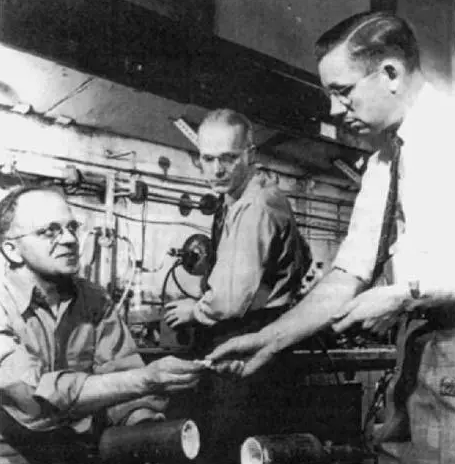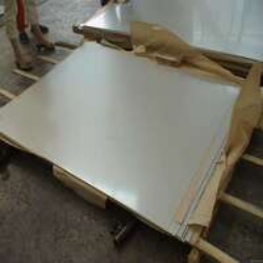PTFE, famously referred to as Teflon, was not a planned discovery. In 1938, DuPont stumbled upon this amazing substance fairly by mishap, stimulating a change in products science and commercial applications.
One early morning in 1938, Roy Plunkett, a young drug store, was hectic having fun with his experiments in a corner of DuPont. His task sounded easy: find a brand-new refrigerant.
(Roy and his colleagues)
Nevertheless, simply when Roy assumed it was just a regular task, things took a turn. He stored the tetrafluoroethylene gas in a cyndrical tube and stated to himself: “Okay, see you tomorrow.” The following day, when he went back to proceed his experiment, he located that the gas had strangely gone away, leaving just a pile of white powder. Well, this was definitely different from the manuscript he planned. Imagine his expression back then: half overwhelmed, half interested. Upon more examination, he found that this weird white powder had some cool superpowers: it was hostile to nearly all chemicals, might remain awesome at extreme temperatures, and was as slippery as oil. Suddenly, Luo understood that while he had yet to find a new refrigerant, he had actually accidentally found the secret component of the kitchen area superhero of the future – non-stick frying pans. After that, frying eggs was no longer a difficulty, and cleansing pots came to be a wind.
Although the discovery of PTFE was unintended, it had massive revolutionary value for the plastics sector and many various other fields, such as aerospace, vehicles, electronic devices, and home appliances. PTFE is extensively utilized as a result of its unique chemical and physical properties – incredibly low rubbing coefficient, high-temperature resistance, chemical stability, and non-stickiness. From cooking area tools to vital parts of the space capsule, PTFE made numerous cutting-edge applications possible. However while PTFE (Teflon ®) marked an innovative advancement in materials scientific research, it was just the start of a lengthy and challenging road to commercialization and prevalent application. The initial challenge was not just to find a new product yet also to figure out exactly how to achieve large manufacturing and how to use it in various fields.
The procedures of monomer synthesis and controlled polymerization of PTFE were not completely developed, making it difficult to produce PTFE in large amounts or a practical way. While the material’s one-of-a-kind buildings were beneficial ultimately application, they additionally posed significant obstacles throughout the manufacturing procedure. Unlike other typical plastics, PTFE is not soluble in solvents, acids, or bases and does not melt into a flowable fluid. Rather, when warmed, it becomes a hard, clear gel that does not thaw and flows like plastics.
(Roy’s Notes: Discovery of PTFE)
To get rid of these challenges, scientists and engineers battled to find procedures from other areas, such as adapting strategies from metal and ceramic handling. To shape PTFE, a process called paste extrusion was utilized, which was obtained from ceramic processing. Although standard molding and forming techniques had some problem refining PTFE, it was possible to produce PTFE components. By 1947, comprehensive study and testing had thrived, and a small production facility was established in Arlington, New Jersey. This marked the start of Teflon ®’s journey from the research laboratory to the market. In 1950, DuPont opened a new plant in Parkersburg, West Virginia, substantially broadening the industrial manufacturing of Teflon ®. That very same year, the modern technology crossed the Atlantic when Imperial Chemical Industries developed the initial PTFE plant outside the United States in the UK.
Vendor of PTFE Powder
TRUNNANO is a supplier of 3D Printing Materials with over 12 years experience in nano-building energy conservation and nanotechnology development. It accepts payment via Credit Card, T/T, West Union and Paypal. Trunnano will ship the goods to customers overseas through FedEx, DHL, by air, or by sea. If you want to know more about hydroxypropyl methylcellulose sigma, please feel free to contact us and send an inquiry.
Inquiry us



